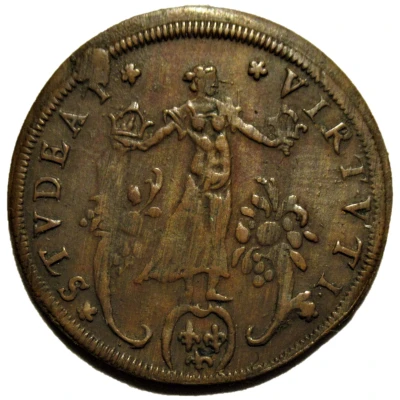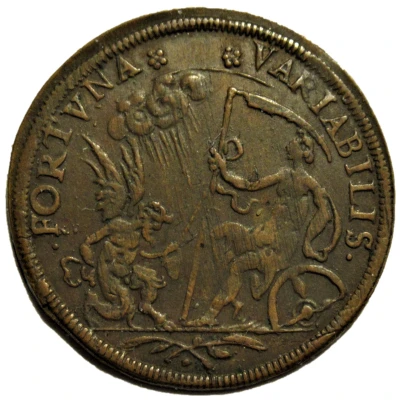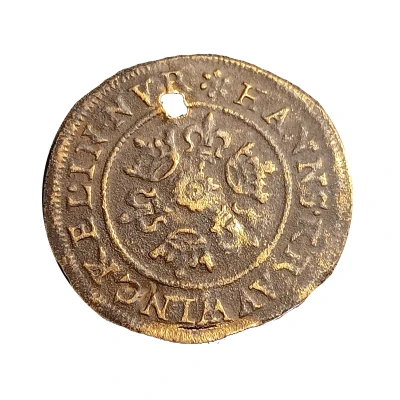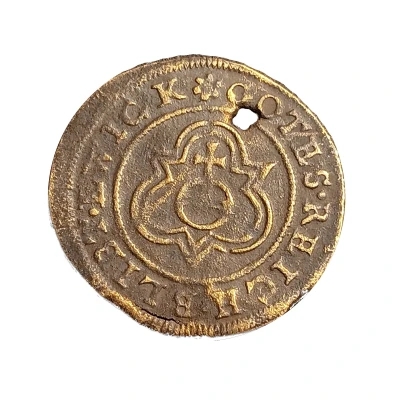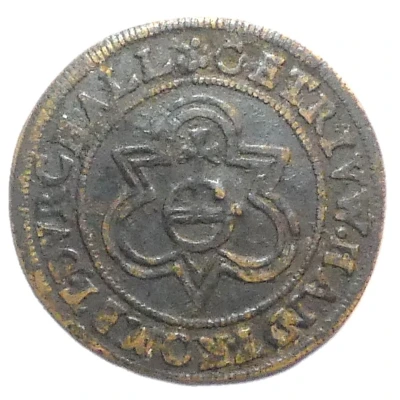
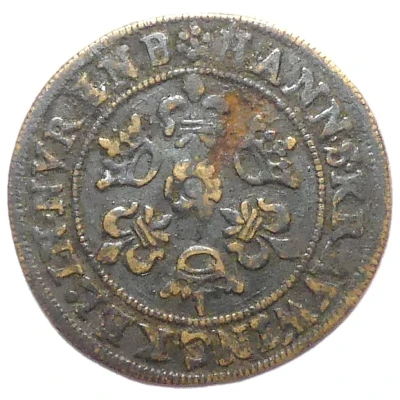

© Collector 86 (CC BY-NC-SA)
Counter Token - Hans Krauwinckel ND
| Brass | 1.8 g | 24.5 mm |
| Location | Free imperial city of Nuremberg (German States) |
|---|---|
| Type | Utility items › Counter tokens |
| Years | 1562-1586 |
| Composition | Brass |
| Weight | 1.8 g |
| Diameter | 24.5 mm |
| Thickness | 0.55 mm |
| Shape | Round |
| Orientation | Medal alignment ↑↑ |
| Demonetized | Yes |
| Updated | 2024-11-14 |
| Numista | N#196807 |
|---|---|
| Rarity index | 78% |
Reverse
Rosette surrounded by three coronets alternating with three fleurs-de-lis in a circle of grenetis, the legend around in a circle of grenetis.
Script: Latin
Lettering: HANNS.KRAVWINCKEL.IN.NVRENB
Engraver: Hans Krauwinckel II
Comment
Hans Krauwinckel was a master engraver in Nuremberg. There is some confusion about the signature, however, as there are two Hans Krauwinckels. Hans I, Damianus Krauwinckel's brother, was master engraver from 1562 to 1586, and Hans II, Damianus's son, took over the post from 1586 to 1635.According to CGB, the "Gold Gulden" with this type of obverse inscription was engraved by Hans I...
Nicolas - Joseph - Jules Rouyer (1820-1898) bequeathed his collection of tokens and medals to the Medals Department of the Bibliothèque nationale de France in 1897. His desire to keep his collection intact and to leave it complete, accessible and useful to his fellow citizens seem to have been the primary motives for this bequest. The collection was started around 1840, and Rouyer contributed his first article to the Revue numismatique in 1844. More than half a century later, the bequest included 1,860 tokens and medieval coins. In 1899, the collection was classified and catalogued, then published by Henri de La Tour in two volumes. The first volume, which includes the 1860 medieval tokens and mereaux that Rouyer considers to be the most interesting, was reissued in 2000 and is still today an essential source for these monuments of the past.
https://www.cgb.fr/rouyer-x-jetons-de-nuremberg-jeton-de-compte-au-type-du-gold-gulden-ttb,fjt_090306,a.html
